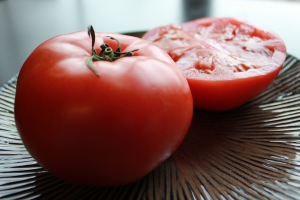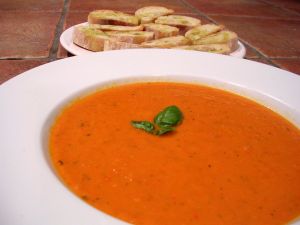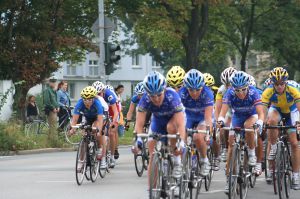Happy Halloween everyone and welcome to our October edition of the makeabigdifference newsletter.
In this months newsletter we take a look at the latest cancer news which focuses on the link between phones and cancer.
The Institute of Cancer Epidemiology in Copenhagen studied thousands of long-term mobile phone subscribers and compared them to a high percentage of people who did not use a hand held phone. Read on to find out their remarkable findings.
We also take a look at the Cancer Research findings which worryingly predict a 45% increase in cancer cancers. Chilling as the results may be the good news is that survival rates are also on the increase almost doubling over the last 40 years in the UK.
You can also read why the humble Tomato is the latest food to be hailed a life saving ‘wonderfruit’. There is also a recipe for creamy tomato soup to help warm those chilly winter days.
Plus we have much much more.
Until next month,
Kim
LATEST CANCER NEWS
‘No link’ between using mobile phones and brain tumours
There is no link between using a mobile phone and developing tumours in the brain or central nervous system, according to a Danish study published in the British Medical Journal today.
Experts from the Institute of Cancer Epidemiology in Copenhagen found there was no difference in the rates of brain or central nervous system tumours in long-term mobile phone users compared with those who do not use them at all.
There were concerns that electromagnetic fields emitted by holding a headset near to the ear could harm the health of five billion mobile phone users worldwide.
But this new research, which studied over 350,000 mobile phone subscribers and compared them with the remainder of people over 30 who were born in Denmark after 1925, found no overall rise in risk for developing tumours in the brain or central nervous system. The study used mobile phone subscriptions as a way to indirectly measure mobile phone use.
There was also no increased risk of developing other types of cancers among long-term mobile phone subscribers.
The authors said: “The extended follow-up allowed us to investigate effects in people who had used mobile phones for 10 years or more, and this long-term use was not associated with higher risks of cancer.
“However, as a small to moderate increase in risk for subgroups of heavy users or after even longer induction periods than 10-15 years cannot be ruled out, further studies with large study populations, where the potential for misclassification of exposure and selection bias is minimised, are warranted.”
In an editorial accompanying the research, Professors Anders Ahlborn and Maria Feychting, of Sweden’s Karolinska Institute described the findings as reassuring but urged continued monitoring of health registers.
Danish experts analysed data of 10,729 tumours between 1990 and 2007 and gathered information from Danish phone network operators and the Danish Cancer Register for the study.
Hazel Nunn, head of evidence and health information at Cancer Research UK, said: “These results are the strongest evidence yet that using a mobile phone does not seem to increase the risk of cancers of the brain or central nervous system in adults. The study minimised many of the problems of previous research in this area and included over 350,000 Danish mobile phone subscribers, many of whom had used mobile phones for longer than 10 years.
“Even longer term follow up of cancer risk in mobile phone users is still needed, as are studies of effects of mobile phone use in children.”
Sourced from: http://info.cancerresearchuk.org/news
NHS faces huge cancer challenge as cases
set to jump by 45 per cent
The NHS must start planning now to deal with a predicted leap of 45 per cent in the number of new cancer cases in the UK over the next two decades, warns Cancer Research UK.
The number of cancer cases is projected to climb from around 298,000 in 2007 to around 432,000 by 2030 – an increase that, without planning, could threaten to overwhelm NHS resources.
Male cancer cases will see the biggest rise – by 55 per cent to over 230,000 in 2030 according to the Cancer Research UK study, published in the British Journal of Cancer.
The main reason for the rise in cancer cases is that people are getting older.
But the good news is that survival is on the increase – cancer survival rates have doubled over the last 40 years in the UK – a trend that is likely to continue.
Cancer cases among women are also forecast to increase by 35 per cent from around 149,000 in 2007 to over 200,000 in 2030.
Study author Professor Peter Sasieni, a Cancer Research UK epidemiologist based at Queen Mary, University of London, said: “Projections of cancer cases are important for planning health services so we can understand where the future burden is on the NHS and also where health awareness messages need to be raised.”
Prostate cancer is predicted to be one of the biggest risers over the 23-year period with over 25,000 more cases of the disease in 2030 compared to 2007. Cases will increase from around 36,000 in 2007 to over 61,000. This is mainly due to the ageing and growing population.1
While cancer cases are set to rise, cancer rates, adjusting for the growing and ageing population, remain broadly stable over the 23-year period at around 400 per 100,000 men per year and 350 per 100,000 women per year.
Despite this, some individual cancers will see an increase in rates.Over the next 20 years, some of the largest increases in cancer rates will be from oral, liver, malignant melanoma and kidney cancers – especially among men.
The rate of malignant melanoma – the most dangerous form of skin cancer – has the biggest projected increase, rising by a staggering 52 per cent for both men and women.
The rate of oral cancer in men is predicted to rise by 25 per cent from 10.9 per 100,000 men per year in 2007 to 13.6 per 100,000 in 2030. (Cases will rise by 75 per cent from around 3,600 to 6,300).
Male kidney cancer rates are estimated to rise by 28 per cent (cases will rise by 90 per cent from 5,145 to almost 10,000) while liver cancer rates in men are set to increase by 27 per cent by 2030 (cases will rise by 94 per cent from around 2,150 to almost 4,200).
In women, liver cancer rates are predicted to fall by two per cent, while kidney cancer rates will rise by 18 per cent over the next 23 years.
The study also predicted that the rate of breast cancer will decline by seven per cent from 120 cases per 100,000 women per year in 2007 to 111 cases per 100,000 in 2030.
The researchers said that most of the decline in the age group 55-64 is due to a significant reduction in the use of HRT in recent years. HRT is an important risk factor for breast cancer first identified in the 1980s.
Professor Peter Johnson, Cancer Research UK’s chief clinician, said: “We’ve witnessed huge improvements in recent decades, with cancer survival doubling over the last 40 years. Cancer Research UK has been at the heart of the progress through investment in research into more effective radiotherapy, many new drugs and improved surgery.
“But it’s also important to be aware of the signs and symptoms of cancer, so we can spot it early. Generally, the earlier cancer is spotted the easier it is to treat successfully, so know what is normal for you and if you spot anything unusual, get it checked out by your doctor.”
Harpal Kumar, Cancer Research UK’s chief executive, said: “The NHS faces a perfect storm over the next 20 years. The main reason for the rising number of cases is simply that people are living longer – and the greatest risk factor for cancer is age.
“At a time when the finances of the health service are being squeezed, it is absolutely crucial that health commissioners plan now for a massive increase in demand for cancer services, to ensure we provide high quality care to all.
“And as we develop ever more sophisticated ways to detect and treat cancer successfully, health planners must deploy resources more effectively to enable all patients to benefit from the latest developments and cutting edge new treatments.”
Sourced from: http://info.cancerresearchuk.org/news
Fundraising Idea of the Month
Remember, remember the 5th of November
Gunpowder treason and plot.
Bonfire Night is an old British tradition dating back to 1605. It celebrates the discovery and thwarting of a plot by English Catholics to blow up The Houses of Parliament in London.
The villain of the Gunpowder Plot, as it became known, was Guy Fawkes. Since that time effigies of him have been burnt on bonfires throughout Britain every November 5th.
Many groups in the UK already use Bonfire Night as a fundraising event. Most towns and villages will feature some kind of Bonfire and Fireworks celebration.
In the South of England especially Sussex, where the tradition is particularly strong, torch-lit fancy dress parades by different Bonfire Societies are common.
Penny For The Guy
Traditionally children made Guys by stuffing old clothes with straw and newspaper. These would then be touted around to collect money to buy fireworks for Bonfire Night.
A modern take on this might be to have a guy making competition.
A collection of finished guys could be displayed anywhere they could be judged or voted on.
If a venue was secure such as a foyer or the reception desk to a building a hat for money could be put in front of each one. The guy that raised the most cash deemed the winner.
This could also work well in a town shopping centre or mall so long as the Guys (and money) were not left unattended. This would be a really visual fundraiser and would be sure to attract the attention of the local press.
Firework Fancies
OK so some people might call them a tray of cookies with fireworks iced on top. But when you take them into your school, your workplace or your community centre who is going to be able to resist buying one.
Bonfire Party
This can be on a large scale – village or town bonfires are common or smaller back-garden affairs. Many local community groups vie to put on the best party or collaborate by running different fundraising stalls at a joint event.
It is usual to charge for admission to Bonfire Events but often this merely covers the cost of the fireworks.
Fundraisers such as hot food stands, candy floss and toffee apples are important parts of maximising the night’s takings. Some groups also sell glow in the dark jewellery and light sticks etc.
Really you should see the Bonfire as a means to an end and get all your other little fundraisers working alongside.
The fundraisers motto should always be-
“If there’s a crowd – Sell them something!”
Beat cancer with nutrition: Tomatoes
If you’re looking to stack your odds against cancer, then eat plenty of tomato products. The healthy habit of eating tomato products has been linked with reduced risks of several types of cancers. The anti-cancer properties in tomatoes seem to be related to their antioxidant levels, particularly from their lycopene, beta-carotene, vitamin C, and phenols. Yet, research reveals that it’s all about the synergistic effects of lycopene and other nutrients in the tomato working together to offer cancer protection.
In a recent review of the literature on tomato products and cancer risk conducted by Britt Burton-Freeman, Ph.D., Director, National Centre for Food Safety & Technology, Illinois Institute of Technology, 178 original research articles were compiled reporting findings in humans on the relationship between lycopene, tomatoes and tomato-based products and cancer risk. Reports on 13 cancer types were identified, of which breast, colorectal, gastric/upper gastrointestinal, and prostate cancer had the most original research published in humans. For breast, colorectal and gastric cancers, the research supported a potentially protective relationship between tomato products and lycopene intake and cancer risk.
One particularly promising area of cancer research focuses on tomato products and prostate cancer protection. Researchers from Montreal conducted a meta-analysis that included 11 case-control studies and 10 cohort studies or nested case-control studies on the use of tomato, tomato products, or lycopene. Compared with nonfrequent users of tomato products, consumers of high amounts of raw tomatoes had an 11 percent reduced risk of prostate cancer, and those with a high intake of cooked tomato products experienced a 19 percent reduced risk. In fact, tomato products show such promise in battling prostate cancer that a research team led by John Erdman, PhD of the University of Illinois recently received a $400,000 grant from the National Institutes of Health to trace how tomato carotenoids help to reduce risk of prostate cancer in humans. This study will help scientists better understand how tomato carotenoids are absorbed and metabolized in the body in order to protect against prostate cancer.
It looks like a picture perfect cancer-protective diet is splashed in the vibrant red shades of tomato products. Paint your plate red every day; toss your pasta with tomato sauce, top your taco with salsa, and ladle up a hearty tomato soup. Start eating to fight cancer.
Sourced from: http://www.tomatowellness.com
Creamy Tomato Soup
Ingredients
- 3 tbsp olive oil
- 1 large onion, chopped
- 2 garlic cloves, crushed
- 2 celery sticks, chopped
- 200g/7oz carrots, chopped
- 1 bay leaf
- 1 large sprig fresh thyme
- 750g/1½lb ripe plum or vine-ripened tomatoes, roughly chopped
- ½ tsp sugar
- salt and freshly ground black pepper
- 200ml/7fl oz passatta
- 500ml/17fl oz vegetable stock
- 100ml/3½fl oz single cream
- crusty bread and butter, to serve
Preparation method
- Heat the olive oil in a large saucepan and cook the onion for 5-6 minutes over a gentle heat until almost softened but not browned. Add the garlic, celery, carrots, bay leaf and thyme and cook for a further 6-7 minutes, stirring occasionally, making sure the vegetables don’t stick to the base of the pan.
- Add the chopped tomatoes and sugar and season well with salt and pepper. Cook for a few minutes, then stir in the passata and vegetable stock. Bring to a simmer, cover with a lid and cook for 35-40 minutes, until all the vegetables are tender.
- Remove the bay leaf and thyme, then blend the soup in a liquidizer or food processor. This will probably have to be done in two batches. Pour the soup into a clean saucepan, passing it through a sieve if you want it really smooth. Stir in the cream, and extra seasoning if required.
- Pour into large mugs or bowls and serve with fresh crusty buttered bread.
Young Heroes Text Donation Service
Don’t forget you can now donate to Impact Young Heroes via a simple text message, here’s how it works;
1) Write one of the following text codes into the main body of your text
MABD01 £1 (use this code will donate £1 to Young Heroes)
MABD01 £2 (use this code will donate £2 to Young Heroes)
MABD01 £3 (use this code will donate £3 to Young Heroes)
MABD01 £4 (use this code will donate £4 to Young Heroes)
MABD01 £5 (use this code will donate £4 to Young Heroes)
MABD01 £10 (use this code to donate £10 to Young Heroes)
Our charity’s code and the amount you wish to donate.
2) Send a text to 70070
Include your charity’s code and an amount (for example CHAR17 £10)
3) You’ll receive a text with a link
to a Gift Aid form.
If you’re a UK tax payer, your charity benefits from a 25% boost to your donation
Why use TextGiving?
1) The charity gets every penny
This is a free service so no admin fees are taken
2) It’s free to take part
All text messages are free on all networks (except for the cost of the donation sent)
3) Easy and quick
Simply send a text and give up to £10 using your Impact Young Heroes unique six-digit code.
Please support us by using our text donation service.
Sports Challenge 2011/2012
As part of our Autumn fundraising drive we are asking supporters up and the country to take part in a range of events and activities to help us raise precious funds for young people affected by cancer.
Each month we will hand pick a selection of sporting events; so whether you are a beginner, seasoned athlete or general thrill-seeker there is an event for you.
What? Edinburgh to Dublin Bike Ride
This long weekend charity cycle challenge sees us cover just over 220 miles in 3 days, as we cycle from the capital of Scotland, to the capital of Ireland!
When? 13th September 2012 – 16th September 2012
Where? Edingburgh
Closing date? Asap to avoid disappointment
For further information:
VISIT: http://www.globaladventurechallenges.com/ OR call Global Adventure Challenges 01244 676454.
What? Pembrokeshire Coast Trek
This charity challenge is to trek for 25 miles, over 2 days on the most beautiful section of the Pembrokeshire Coastal Path – from Solva to Trefin trekking north to south. This is a fantastic weekend trek for charity taking in the BEST coastal scenery you can find in the UK.
When? 13th July 2012 – 15th July 2012
Where? St. Davids
Closing date? Asap to avoid disappointment
For further information:
VISIT: http://www.globaladventurechallenges.com/ OR call Global Adventure Challenges 01244 676454.
What? Everest Basecamp Trek
The goal is simple – to take part in one of the most fantastic charity treks to the foot of the world’s highest mountain, and if you have enough energy, to summit Kala Patthar (5,545m) – a fantastic mountain located near Everest Base Camp giving us the BEST views of this majestic peak.
When? 10th February 2012 – 27th February 2012
Where? Kathmandu.
Closing date? Asap to avoid disappointment
For further information:
VISIT: http://www.globaladventurechallenges.com OR call Global Adventure Challenges 01244 676454.








